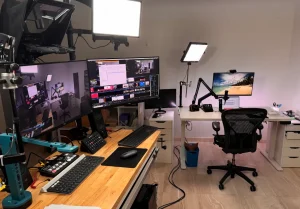Sustainable Investing: A Practical Guide to Using ESG Criteria for Stock Selection
5 min read
Let’s be honest. Investing used to be simpler. You looked at a company’s profits, its growth potential, and maybe its price-to-earnings ratio. The goal was straightforward: make money. But for a growing number of investors, that goal has expanded. It’s not just about what you earn, but how you earn it.
That’s where sustainable investing and ESG criteria crash the party. They’re not just buzzwords or a passing trend. They represent a fundamental shift in how we evaluate companies. Think of it like this: you wouldn’t buy a house without checking the foundation, right? Well, ESG is like a structural inspection for a company’s long-term health.
What Exactly is ESG? Breaking Down the Alphabet Soup
ESG stands for Environmental, Social, and Governance. It’s a framework for assessing a company’s behavior and policies in these three critical areas. It’s the toolkit for sustainable stock selection. Here’s the deal with each piece:
Environmental (E)
This is all about a company’s relationship with the planet. It’s the most talked-about pillar, and for good reason. We’re talking about:
- Climate change & carbon emissions: How much pollution is the company responsible for? What’s their plan to reduce it?
- Resource depletion: How efficiently do they use water and energy?
- Waste management & pollution: What’s their track record on handling toxic waste or plastic packaging?
- Deforestation & biodiversity: Does their supply chain contribute to habitat destruction?
Social (S)
This pillar focuses on people—both inside and outside the company walls. It asks: how does this business treat its human capital? Key factors include:
- Employee relations & diversity: Are working conditions safe and fair? Is there pay equity? Does leadership reflect the diversity of its customer base?
- Data privacy & security: In our digital age, how well does a company protect its users’ information?
- Community relations: Is the company a good neighbor? Or does it exploit local communities?
- Supply chain labor standards: This is a big one. Does the company ensure its suppliers don’t use child or forced labor?
Governance (G)
Often overlooked, governance is the backbone. It’s about the rules of the game—how the company is run. Strong governance can prevent scandals and foster long-term thinking. Look for:
- Board composition: Is the board diverse and independent? Or is it just a bunch of the CEO’s friends?
- Executive pay: Is CEO compensation tied to long-term performance or just short-term stock pops?
- Shareholder rights: Can investors actually influence company direction?
- Transparency & ethics: Is the company open about its lobbying activities? Does it have a history of corruption?
Why Bother? The Compelling Case for ESG Investing
Sure, it feels good to align your investments with your values. But is there a financial case? Absolutely. In fact, that’s the real driver behind its surge. Integrating ESG criteria into your stock selection process isn’t about sacrifice; it’s about risk mitigation.
A company with poor environmental controls is one oil spill away from billions in fines and reputation damage. A company with weak governance is a ticking time bomb for fraud. A company with unethical labor practices faces consumer boycotts and supply chain disruptions.
ESG analysis helps you spot these risks before they blow up. It helps you identify companies built to last—the ones that attract top talent, foster customer loyalty, and innovate for the future. They’re simply better positioned for the long haul.
Putting It Into Practice: How to Actually Select ESG Stocks
Okay, theory is great. But how do you, as an individual investor, actually do this? It can feel overwhelming. You don’t have a team of analysts. Here’s a practical approach.
1. Start with ESG Ratings & ETFs
You’re not alone. Several firms—like MSCI, Sustainalytics, and Refinitiv—specialize in scoring companies on their ESG performance. Many online brokerages now display these ratings directly on their stock research pages.
An even easier entry point? ESG-focused ETFs (Exchange-Traded Funds). These funds do the heavy lifting for you. They bundle together dozens of companies that have been pre-screened for strong ESG profiles. It’s instant diversification and a great way to start.
2. Dig Deeper: Look Beyond the Score
Ratings are a fantastic starting point, but they’re not perfect. A company might have a great overall score but a terrible record in one specific area that matters to you. This is where you need to put on your detective hat.
Read a company’s annual sustainability report (usually found on their website). Scan news headlines for controversies. Look for specific, measurable goals. Are they aiming for net-zero emissions by 2040? Great! Do they have a clear, funded plan to get there? Even better.
3. Beware of Greenwashing
Ah, the elephant in the room. Greenwashing is when a company spends more time and money marketing itself as green than on actually minimizing its environmental impact. It’s all talk, no action.
Spotting it requires a skeptical eye. Look for vague language—words like “eco-friendly” or “green” without any data to back them up. Be wary of a company that highlights one small positive initiative (like a recycling program) while its core business model is fundamentally unsustainable.
The Future is Integrated
The conversation is already moving beyond just “ESG vs. traditional” investing. The goal is a fully integrated approach. One where environmental, social, and governance factors are simply part of the standard financial analysis—a non-negotiable layer of due diligence for any serious investor.
It’s not about perfection. No company is flawless. It’s about progress. It’s about identifying the companies that are genuinely trying to be part of the solution, understanding the risks and opportunities of the 21st century better than their competitors.
In the end, sustainable investing with ESG criteria is a powerful lens. It clarifies the world, helping you see the companies not just for what they earn today, but for the legacy they’re building for tomorrow. And that might be the smartest investment of all.







